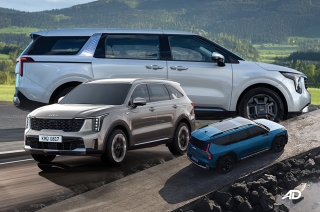
There are six types of fluids running inside your vehicle. These fluids are not permanent; they require replacement every now and then as they deteriorate over time as part of general vehicle maintenance. Deterioration causes problems to components affected by the unchanged fluid, and one example of the commonly overlooked fluids is the coolant – when, in fact, it is one of the most crucial as it keeps your engine running in safe temperatures.
When to check on your coolant

Normally, coolant check-up is part of the Preventive Maintenance Service so it’s always best to follow your PMS schedule. Checking the engine coolant depends on the distance you drive on a daily basis. Some service centers recommend checking your coolant once every two weeks, just to be safe.
Although engine coolants last longer than two weeks, it is safe to check for leaks. Low coolant level is a culprit for having a fiery hot hood, as engine heats above allowable temperature. You’d also notice steam sipping out from the engine bay and out of the hood in worse cases, which could also be an early warning to engine overheating. In addition, even your car’s fuel economy is affected by running your car with little to no coolant.
So, when do you change your coolant?

When coolant is not flushed for a long time, or after a certain mileage, the chances of your car overheating increase to a maximum level. There are varying recommendations on when to change your coolant. This depends on the car you’re driving, the brand or type of coolant you use, and the distance you cover over a period of time.
Coolant on more modern cars—although not all—is usually recommended to be flushed out every 10 years or 160,000 km, while some require shorter than that. It’s always good to check with your vehicle manufacturer or your user manual.
What happens when you miss changing your coolant?

Coolant becomes acidic when left in the engine for a very long time. When your coolant becomes acidic, it would no longer keep rust from attacking your engine. Rust on the insides of your engine spells out disaster, as you could face more expensive services just to save your engine from dying—for good. However, it isn’t just your engine that’s at stake. Coolant also keeps your radiators from corrosion so you’re also putting the components of your cooling system at risk.
Common signs that you already need to change coolant

There are initial signs that something’s wrong and your coolant, or cooling system including your air conditioning, needs to be changed. Here are some of the early problems that may arise when you don’t regularly check on your coolant reservoir.
- Car overheats quickly – when your car overheats easily, you may want to go get it checked. Overheating is one obvious cause of the coolant not performing its job.
- Leak – you should always know that something’s wrong when your vehicle leaves traces of fluid on the floor. Radiator leaks are among the hints that your cooling system is compromised and should undergo a mechanic’s treatment.
- Sweet smell when your car’s running – some people describe the smell of coolant, or antifreeze, as sweet syrupy. So, when you started perceiving that kind on smell while you’re driving, schedule for a trip to the mechanic.
- Coolant level always depletes – this is why you should always check on your coolant reservoir. Having to top up over and over again means that there is something wrong with your car. It may be a crack on the hoses where the coolant circulates or a probable internal problem.
Latest Features
-
An all-electric future: The Porsche Macan Electric / Featured Article
Porsche’s Macan goes all-electric; it’s a new beast with an electrified heart, yet unmistakably Porsche in performance and spirit.
-
Which Kia should I buy? / Featured Article
We’re here to help you decide which Kia vehicle is best for you, whether it’s a sedan, crossover, or minivan.
-
Why Lynk & Co is a good option for luxury car buyers / Featured Article
Lynk & Co offers premium value for those exploring the luxury market.
Popular Articles
-
Electric Vehicles in the Philippines for under P1 million
Jerome Tresvalles · Aug 19, 2025
-
Top 3 Cars For Every Lifestyle—What Cars Are Right For You? | Behind a Desk
Caco Tirona · Apr 24, 2024
-
5 Tips to Maximize Fuel Efficiency
Jerome Tresvalles · Sep 09, 2024
-
Five driving habits that are draining your fuel tank
Jerome Tresvalles · Jun 24, 2025
-
Can engine braking harm your engine?
Jerome Tresvalles · Sep 11, 2025
-
Do electric cars even need maintenance?
Jerome Tresvalles · Oct 23, 2024
-
Best vehicles for an active outdoor lifestyle
Shaynah Miranda · Jul 25, 2024
-
How to drive different types of vehicle transmissions
May 23, 2024
-
5 easy ways to keep your car interior clean
Allysa Mae Zulueta · Nov 15, 2021
-
How to survive Metro Manila traffic
Earl Lee · Aug 16, 2022



